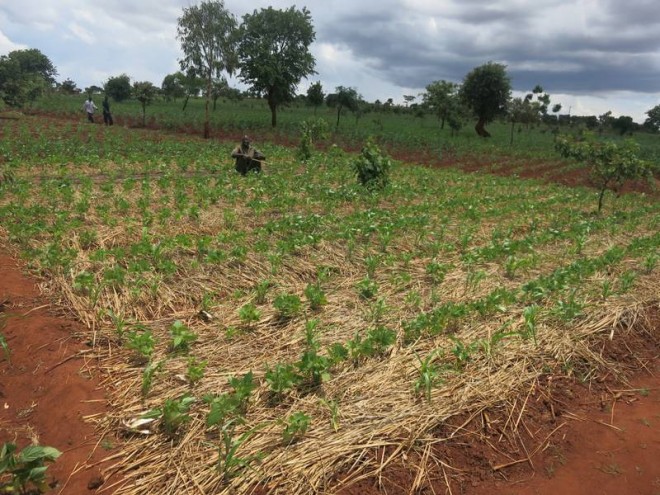Contributed by CSA Project Manager, Chisomo Kamchacha
The application of the science of ecology to agricultural systems is increasingly being recognized as the way forward for agriculture. When a dry spell hit the country recently, farmers can see and appreciate the role of mulching. Observing the difference between two adjacent fields- one field that is mulched and still has moisture and a healthy crop and one that is not mulched, where the soil is completely dried up and the crop is wilting. Farmers begin to understand the important role that mulch plays not only in retaining soil moisture, but in feeding termites and restraining them from feeding on the crops growing in the field. Farmers understand how and why micro-organisms are present in some fields and why not in other fields. And they also understand why soil color, odor and organic matter differ from one field to another.
Increasing food production is one of the world’s biggest challenges of our times. Doing business-as-usual will not help the world get over this challenge, and neither will sitting still hoping that things will sort themselves out. In a country where 80% of the population is subsistent smallholder farmers, the globally dominating industrial farming model is not attainable or appealing. These models have, by and large, impoverished farmers as evident in many countries.
300 farmers in our Climate Smart Agriculture project in Dowa district, from Traditional Authorities Dzoole, Kayembe and Mponela, have decided to forgo the status-quo and try something different. These farmers have embarked on their journey to agroecology. They have mulched their staple fields, diversified crops in their small pieces of land, applied compost and animal manure, and planted agroforestry trees. Their interest is not only producing the food that they need, but to create an environment that is self-sustaining and create additional ecological benefits beyond food.
Each farmer’s situation is unique and special as their fields differ in many ways. Their soils differ in terms of structure, compaction, depth, residues, color, odor, organic matter, water retention, soil cover, erosion, invertebrate presence and microbial activity. The outlook of the plants also differs depending on the soil health factors presented above. Some indicators for crop health include: appearance of crop, crop growth, disease incidence, insect pest balance, natural enemy abundance and diversity, weed competition and pressure, actual or potential yields, vegetation diversity, natural surrounding vegetation, and management systems.
Using a rapid, farmer-friendly agroecological method to estimate soil quality and crop health, 36 fields were assessed and the results are presented below. A score of 10 represents the best status in each indicator, 5 is the middle level, and 1 is the worst. As this is the first year most of the farmers have implemented new practices, the scores for the majority of the farmers were within the range of 4-6. The fields are currently in a transition stage and we foresee that with future assessments, the scores will improve. Stay tuned for results from future reports.




